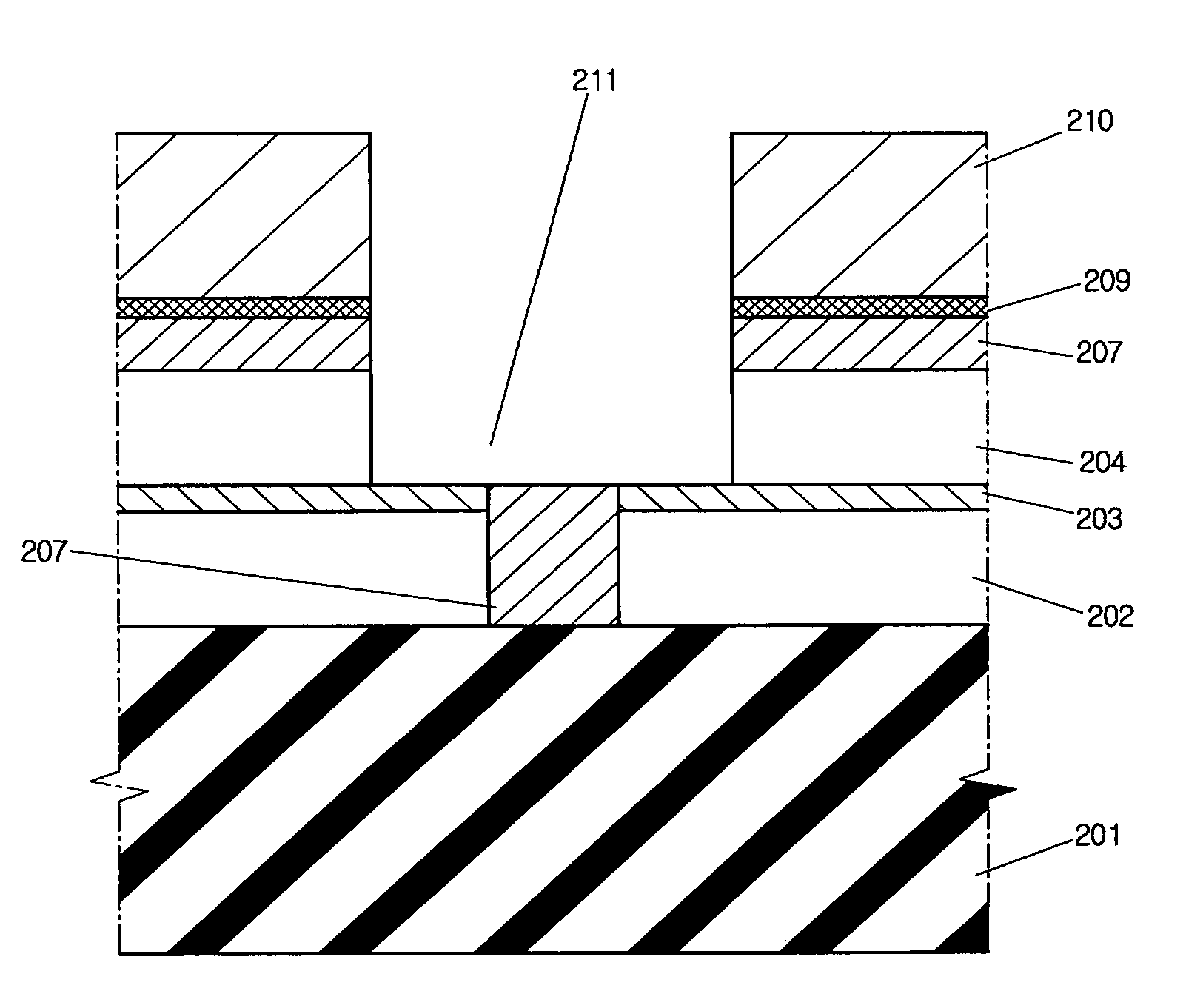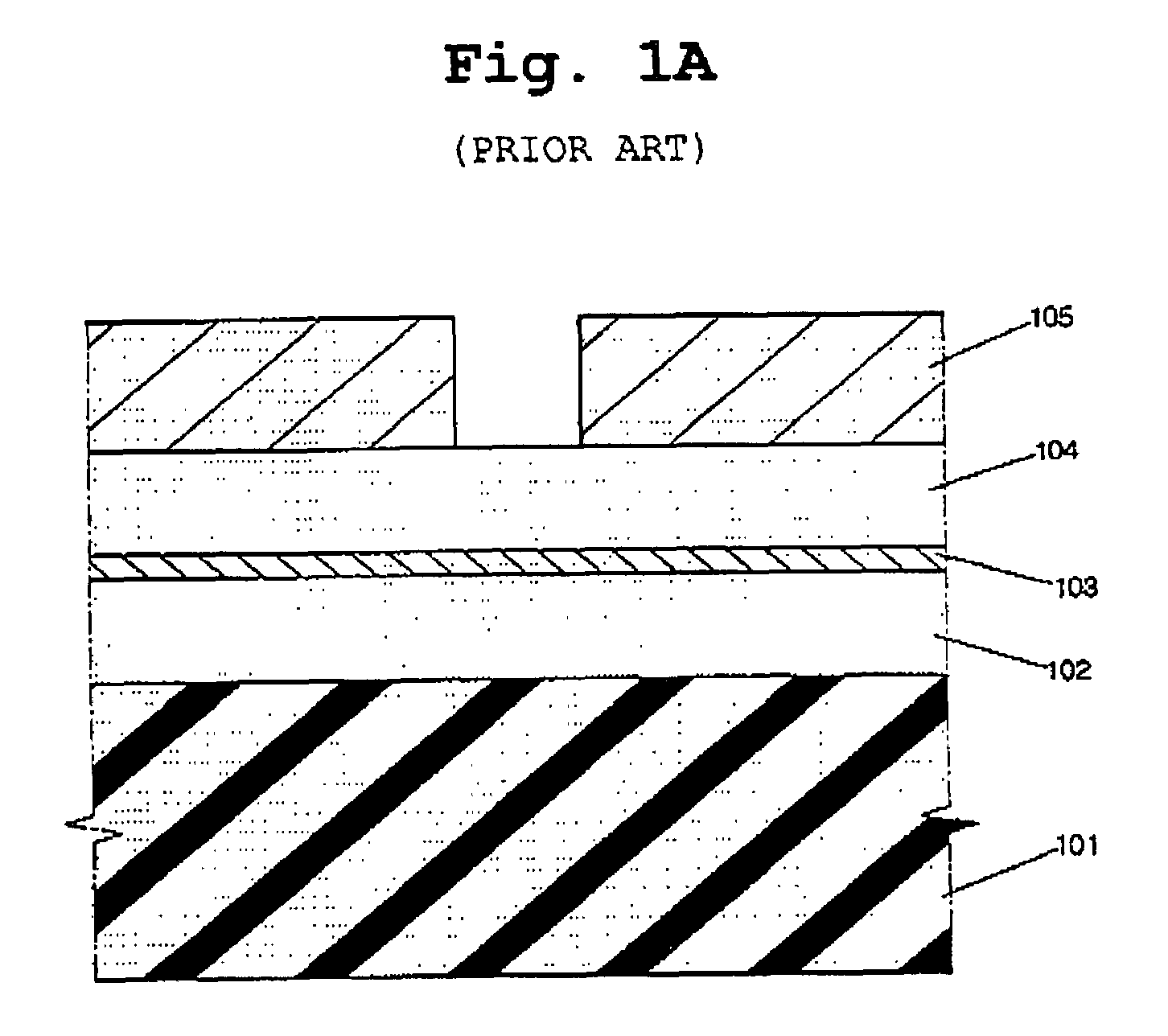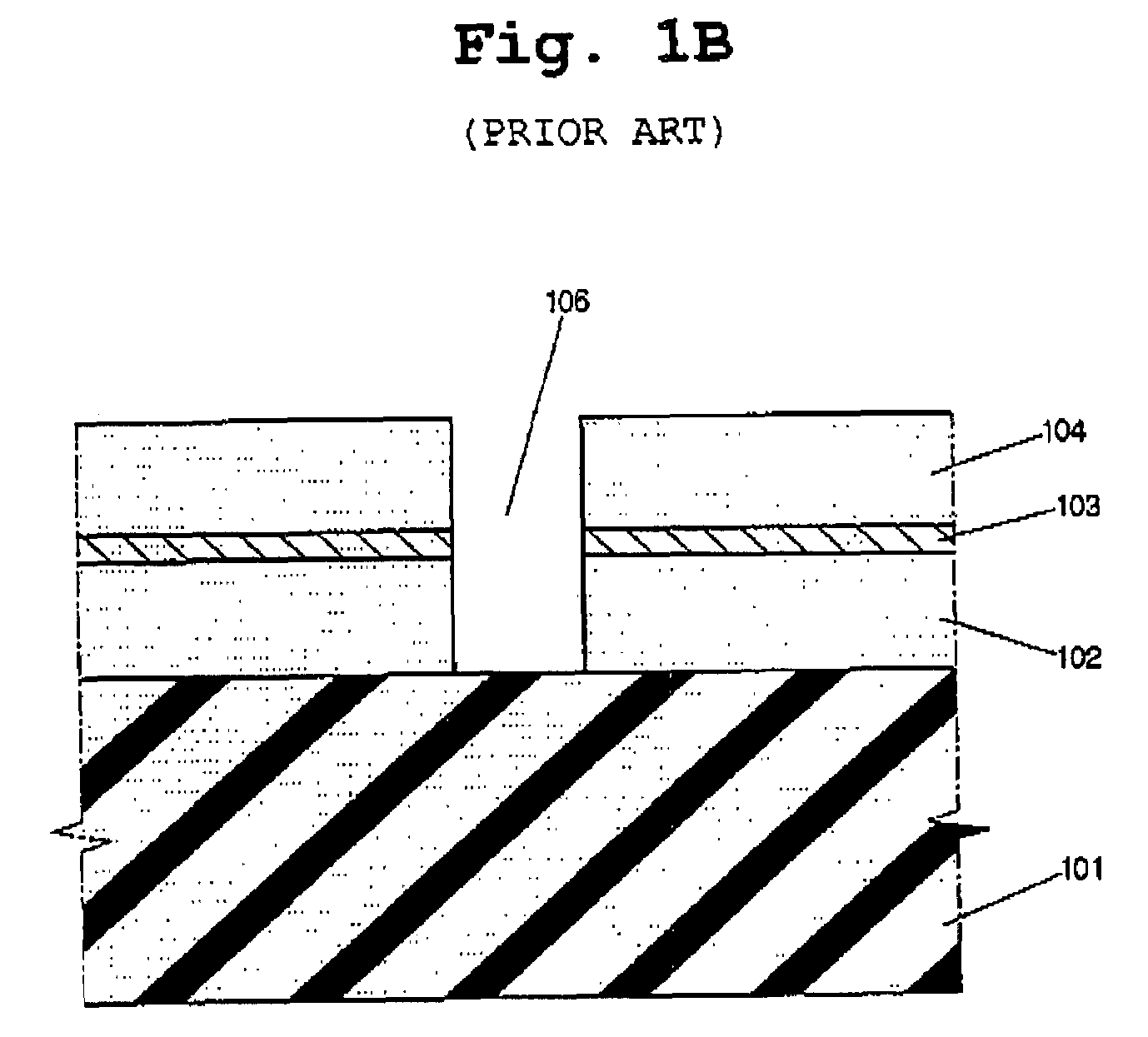Method for preventing the formation of a void in a bottom anti-reflective coating filling a via hole
a technology of anti-reflective coating and via hole, which is applied in the direction of photosensitive materials, instruments, photomechanical equipment, etc., can solve the problems of increased parasitic capacitance between interconnects on the same layer, increased resistance, delay of signal transfer,
- Summary
- Abstract
- Description
- Claims
- Application Information
AI Technical Summary
Benefits of technology
Problems solved by technology
Method used
Image
Examples
Embodiment Construction
[0030]Hereinafter, a preferred embodiment of the present invention will be described with reference to the accompanying drawings. FIGS. 2A to 2F are cross-sectional views showing a method for manufacturing a semiconductor device according to a preferred embodiment of the present invention.
[0031]First, as shown in FIG. 2A, a first interlayer dielectric 202 with low permittivity is deposited on a semiconductor substrate 201. Herein, although not shown in the drawing, it is evident that on the semiconductor substrate, an isolation layer defining an active region of the substrate 201, a capacitor and / or a transistor on the active region, etc. may be previously formed.
[0032]The first interlayer dielectric 202 can be formed of various materials. In particular, a tetraethyl orthosilicate (TEOS)-based oxide layer (such as Low Pressure-TEOS, O3-TEOS, d-TEOS and so on), undoped silicate glass (USG), fluorosilicate glass (FSG), SiH4-based glass layer (e.g., deposited by High Density Plasma CVD...
PUM
| Property | Measurement | Unit |
|---|---|---|
| thickness | aaaaa | aaaaa |
| temperature | aaaaa | aaaaa |
| temperature | aaaaa | aaaaa |
Abstract
Description
Claims
Application Information
 Login to View More
Login to View More - R&D
- Intellectual Property
- Life Sciences
- Materials
- Tech Scout
- Unparalleled Data Quality
- Higher Quality Content
- 60% Fewer Hallucinations
Browse by: Latest US Patents, China's latest patents, Technical Efficacy Thesaurus, Application Domain, Technology Topic, Popular Technical Reports.
© 2025 PatSnap. All rights reserved.Legal|Privacy policy|Modern Slavery Act Transparency Statement|Sitemap|About US| Contact US: help@patsnap.com



